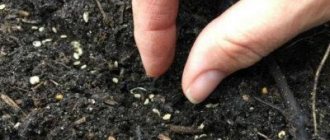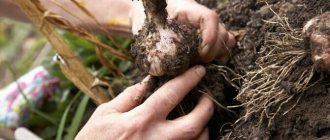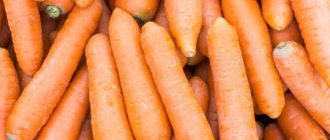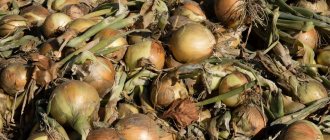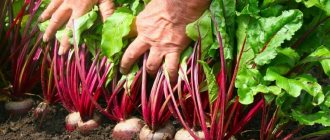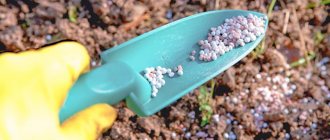Root crops are grown in every dacha and personal plot. These vegetables are completely unpretentious, do not require special care, and grow, one might say, on their own. However, there are some nuances in when to harvest beets and carrots (this is usually done simultaneously) for the purpose of storing them for long-term winter storage.
The vegetable harvest needs to be harvested at the moment when it reaches its highest ripeness, because everyone knows that it is in the last weeks of development that root crops accumulate the main sugars. Their taste, as well as their keeping quality, largely depend on the timeliness of digging.
When is it 100% possible to dig up root crops?
It is impossible to accurately determine the timing of harvesting both beets and carrots in advance. When choosing a time for cleaning work, you should be guided by several important factors.
- According to the forecast given by weather forecasters for the next 2-3 weeks, is it expected to rain? Vegetables should not be allowed to remain in wet and damp soil for a long time. Root crops are heavily saturated with moisture and crack from its excess; they become too fragile, so they are much more easily injured when dug up. Naturally, such a crop is stored very poorly.
- Depending on the weather. It became quite cold outside, the air had already cooled down to +4...+8 °C (in the morning and evening), despite the fact that during the day it could be warmer (up to 10-12 °C). Remove vegetables from the garden before the onset of severe cold weather, because frozen root vegetables are no longer suitable for storage. Although carrots are more cold-resistant, they can withstand several morning frosts when the temperature drops to -2 ° C. Moreover, it even becomes sweeter. Beets cannot withstand even mild freezing.
- According to the condition of the tops. The lower leaves, closest to the ground, have withered and turned yellow. This means that photosynthesis in the tops slows down and the aerial part, which becomes unnecessary, begins to die off. However, in some cases, a change in foliage color may be associated with moisture deficiency or plant diseases (each specific case must be examined separately).
- By changing the appearance of root crops (visually visible confirmation of ripeness appears). In carrots, if you pull a signal specimen out of the soil, thin thread-like roots begin to form - this is a sign of maturity; you should not keep the root crop in the ground longer. Other symptoms are characteristic of beets: small convex tubercles appear on the upper part protruding from the soil, indicating that the desired level of ripeness has been reached.
Note: The active set of nutrients in carrots occurs at +6...+8 °C, in beets the temperature range for the set of useful components is greater - +5...+15 °C.
You cannot rush and remove root crops from the ground too early, because they have not yet grown to the required condition, and also have not acquired the required amount of nutrients and vitamins. But you shouldn’t be late with harvesting either, because if the weather is good for a long time, already ripe vegetables continue to grow (however, they don’t get better, they only get worse).
When the part sticking out of the ground (and this definitely happens) exceeds all reasonable dimensions corresponding to the varietal characteristics, then it is better not to delay digging. Too large overgrown beets become rough and tasteless. In addition, air cavities form inside the vegetable. The core of carrots becomes woody and becomes practically inedible.
Since the autumn cold snap comes to different regions of our vast homeland at different times, the timing of harvesting root crops also differs. Let's look at the table in more detail when it's time to start harvesting beets and carrots, depending on where they grow (the time is approximate, focus on many factors).
| Beetroot and carrots | Ukraine and South Russia | Belarus | Central Russia (including the Moscow region) | Leningrad region and North | Siberia and the Urals |
| Cleaning time | From mid-October to the first days of November | Second half of October | Late September - early October | From the beginning until the 20th of September | Second and third ten days of September |
Note: also focus on what variety of beets or carrots is planted (early, mid-season, late). In our article, we focus on varieties that are as late as possible for each region (since they are the most juicy, healthy, tasty and easy to store for the winter).
It is recommended to carry out cleaning work in dry and calm weather, when there has been no precipitation for at least several days. It is very desirable that the soil in the garden bed is a little dry, so the root crops will be clean and last longer.
Fruit harvesting rules
If, however, during work, some fruit has pierced a tooth or cut off a part, it should not be left for storage due to the risk of contracting mycotoxicosis and phytospores. There is no need to wash vegetables, because this will deprive them of their protection - a unique oily layer that acts as a barrier to microbacteria. Vegetable root vegetables are shaken off the ground and left to dry. The tops are cut at a distance of 30-50 mm from the fruit. If you tear off the tops by hand, you may accidentally damage the top of the carrot or beet, which will compromise the integrity of the fruit.
Harvesting carrots
Vegetables are harvested slowly, but within the allotted time frame. After September 15, carrots grow actively. With early night frosts, in the northern regions of the country, harvesting takes place after September 15, but in the Moscow region this is allowed to be done during October. It is necessary to cope before the night frosts begin to freeze the soil.
To understand that the carrots are ready for harvesting, one vegetable is taken out of the ground. If small roots are noticeable on the sides, this means the root crop is ripe and you can harvest it without fear. You can store the harvest in boxes sprinkled with sand.
Beet collection
Beets are ideal for winter storage. This is a very healthy vegetable with a huge amount of vitamins and minerals. Many dietary complexes include root vegetables in their winter nutrition menu. Usually, it is collected in September. If the autumn is warm, the dates can be moved to October 15, and even further. If the fruits are small, they are left in the garden to ripen even until frost. Small beets:
When the time comes to collect, you need to carefully dig up the root crops on a fine day, clean them of any remaining above-ground greenery and place them in sand or sawdust for long-term storage.
The most favorable days for harvesting beets and carrots in 2021
Scientists have long proven that the Moon, which is the only satellite of the Earth (and with a fairly decent mass), has a strong influence on the growth and development of plant organisms. This is due to the ability of a celestial body to attract liquids found on our planet.
When choosing a specific date when to dig up beets and carrots, you will have to take into account the lunar calendar. If you remove root crops from the ground on the wrong day, the plants may not be ready for this, will not gain enough moisture and will not be stored well.
When the Moon is in its waning phase, plant juices rush down to the root crops. Therefore, the harvest harvested during this period turns out to be juicy, tasty, and will demonstrate maximum shelf life. The most favorable days for harvesting beets and carrots in the current year 2022 will be:
- September 1-6;
- September 22-30;
- October 1-5;
- October 21-31;
- November 1-14.
Note: Experienced vegetable growers do not recommend planning harvesting activities during the peak lunar phases: new moon and full moon. At this time, it is better not to disturb the plants.
Read: when and how to properly remove garlic from the garden
What temperature and humidity should it be?
At temperatures close to zero, metabolism rapidly slows down, which contributes to greater preservation of root crops. They have no rest period. The storage temperature of carrots and beets should not be more than 10 degrees , because already at +5 degrees, buds that could not be completely removed can begin to grow.
If the humidity is low, it threatens withering of the root crops; if it is high, it is fraught with rotting. Therefore, humidity should be maintained around 85 – 90%.
You can read more about the required storage temperature in this article.
How to do it correctly: 7 subtleties (important: read to the end)
Harvesting beets and carrots is a simple job and does not require much physical effort. However, it must be done correctly, otherwise the shelf life of root crops in winter will be significantly reduced. There are several subtleties that require precise implementation.
Preparation
It has been noticed that root vegetables removed from dry soil last longer. Therefore, two weeks before the expected harvest day, watering of the beet and carrot beds is stopped. It is desirable that there is no rain, but little depends on the person.
Undermining
IMPORTANT: If you try to just pull a vegetable out of the ground, you can tear off the tops, leaving the root itself in the ground.
This option is only possible if the soil in the garden bed is soft and very loose. In all other cases, it is better to dig up the root crops with a shovel or garden fork, sticking them in a little further from the protruding leaves.
Note: Beets (both red and sugar beets) are easier to pull out than carrots.
Extraction from the ground
The dug up root vegetables are carefully removed, trying not to damage the delicate skin. The remaining soil is carefully shaken off or removed by hand. There is no need to wash the vegetable crop, since during this procedure minor microtraumas inevitably appear, and they may rot afterwards.
Under no circumstances should you scrape dirt from vegetables with a shovel or hit them against each other or the ground. Ripe beets and carrots can crack or break even with a relatively small blow. Damaged root crops completely lose their shelf life and are unsuitable for winter storage.
Drying
The extracted root vegetables need to be dried a little, leaving them to lie for an hour right there in the garden bed, distributed directly on the ground. If the weather is damp and it rains constantly, then you can skip this stage, because there will be no benefit from it.
How to properly trim beets and carrots for winter storage
Before removing them from the garden for storage, you should free the vegetables from their leaves. Usually the tops are not cut to the ground, but stumps of about 1-2 cm are left. However, some vegetable growers prefer to cut off completely, while others also take about 0.5 cm from the top of the root crop.
Note: for storage in the cellar the first option is better, at home - the third. The second is the golden mean.
You cannot tear off, break out or twist the tops, because this can damage the vegetable itself. You only need to use a sharp, well-sharpened knife (at least with the same scissors). Also, some vegetable growers carefully cut off both the lateral root hairs and the lower roots that are too long.
Drying before storage
To ensure that fresh tops are corked and do not rot, it is important to lay out the harvested crop to dry, spreading it on oilcloth or other similar flooring under a canopy in the shade in the open air or in a spacious, well-ventilated room (veranda, barn, attic, loggia, balcony, etc.) etc.).
Note: Minor wounds and other damage will heal within a couple of days.
Sorting
Properly dug up, prepared, trimmed and dried root vegetables must be sorted, sorted by variety and size. Only completely healthy and intact specimens are suitable for storing for the winter.
Note: all small items, as well as damaged vegetables, are set aside for processing or immediate consumption.
Suitable varieties
Late-ripening varieties of root crops should be selected for storage . The following varieties and hybrids of carrots are best stored:
Gribovchanin F1.- Nantes 4.
- Incomparable.
- Nevis F1.
- Samson.
- Chance.
- Moscow winter.
- Incomparable.
Beet varieties suitable for long-term storage:
- Bravo.
- Incomparable.
- Bordeaux 237.
- Red ball.
- Podzimnyaya.
- Mulatto.
- Detroit.
- Nosovskaya flat.
There are no definite recommendations on how best to store it at home and where, in the basement or underground (underground), everyone decides for themselves experimentally. The determining factors for further preservation are:
- choice of root crop variety;
- preparation technology;
- room temperature;
- humidity mode;
- lack of excess oxygen supply;
- pest protection.
Among the storage methods, every gardener will find his own, the most convenient and profitable. First, you need to decide when and how to remove root crops for storage .
You can read more about suitable varieties of carrots and shelf life here, and here we talked about which varieties are suitable for long-term storage.
Preparation for storage
Immediately after digging and removing the tops, the carrots are put under a shed to dry.
Root vegetables do not dry for long, 2-3 hours is enough. After this, the root crops are carefully inspected and sorted before being stored. Instances with signs of damage and disease are placed in a separate box. They are eaten immediately or used for preservation.
For winter storage, only completely healthy, strong carrots are selected. Selected specimens are kept for a week in a dark, cool room with good ventilation, and then stored in a cellar or basement.
Interesting facts about carrots
- Carrots have a record content of vitamin A and carotenoids;
- The ancient Greeks believed that carrots helped you fall in love faster;
- Just three carrots provide the amount of energy needed to walk five kilometers;
- The longest carrot, 5.8 meters, was recorded in the UK in 1996;
- Carrots contain 88% water;
- Nine root vegetables contain as much calcium as one glass of milk. In carrots, calcium is more easily absorbed than calcium from milk (of animal origin);
- Experts estimate that an average person eats about 10,866 carrots in a lifetime;
- Carrots contain more sugar than other vegetables except beets.
Tips for the garden, vegetable garden and flower garden
Autumn pruning of fruit trees and shrubs in the fall in the Moscow region
Autumn pruning of fruit trees and shrubs in autumn in the Urals
Autumn pruning of fruit trees and shrubs in autumn
